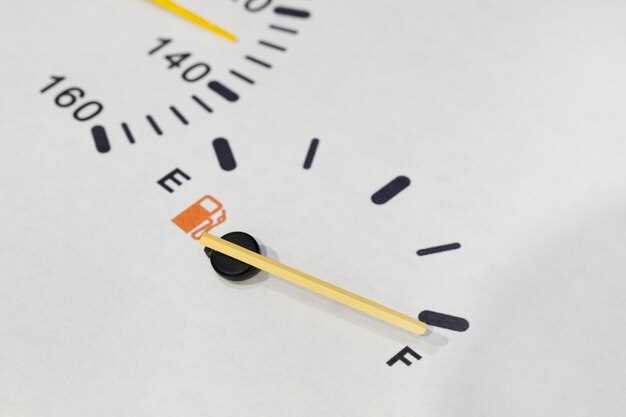
How to Fix Understeer and Oversteer Fast
- George Harris
- 0
- Posted on

Driving dynamics are a critical aspect of vehicle performance, and understanding these phenomena is essential for both novice and experienced drivers. Understeer and oversteer are two common handling issues that can significantly impact safety and driving enjoyment. Understeer occurs when a vehicle turns less than intended, often causing the driver to lose control in corners. Conversely, oversteer is characterized by excessive rotation of the vehicle, which can lead to spins and loss of control.
Addressing these issues often requires a combination of driving techniques and vehicle adjustments. By adopting certain strategies, drivers can mitigate the effects of both understeer and oversteer. Understanding the root causes of these handling characteristics is the first step toward implementing effective solutions. Factors such as tire pressure, weight distribution, and suspension setup play a crucial role in a vehicle’s handling behavior.
This article will explore practical and quick solutions for managing understeer and oversteer, helping drivers enhance their skills and confidence behind the wheel. From adjusting driving techniques to making modifications on the vehicle, readers will find actionable advice to improve their overall driving experience. Let’s dive into the solutions that can transform how you handle your car on the road.
Adjusting Tire Pressure to Mitigate Understeer
Understeer occurs when a vehicle’s front tires lose grip during cornering, causing the car to steer less than intended. Proper tire pressure management is crucial in addressing this issue. When tire pressure is adjusted correctly, it can significantly enhance grip, improve steering response, and reduce the tendency to understeer.
Lowering Front Tire Pressure: Decreasing the pressure in the front tires can increase the contact patch with the road, enhancing grip. This adjustment allows the front tires to move more flexibly, providing better feedback to the driver and more control through corners. However, it is vital to maintain the tire’s recommended pressure range to prevent overheating and excessive wear.
Increasing Rear Tire Pressure: Raising the rear tire pressure can also help counteract understeer. By making the rear tires stiffer, you can reduce their overall grip, which encourages the rear of the vehicle to rotate more easily during turns. This method often promotes a more balanced handling feel, allowing for a more responsive driving experience.
Finding the Right Balance: The effectiveness of these adjustments depends on various factors, including vehicle type, tire characteristics, and driving style. Start with incremental adjustments to find the optimal balance between front and rear tire pressures. Some drivers find success in a staggered setup, where the front tires have lower pressures than the rear, while others might require a more symmetrical approach.
Always check tire pressure when the tires are cold, as heat generated during driving can lead to inflated readings. Regular monitoring and fine-tuning of tire pressure can lead to improvements in handling dynamics, ultimately minimizing understeer while ensuring safety and performance on the road.
How Suspension Settings Influence Oversteer Management

The suspension system of a vehicle plays a crucial role in its overall handling characteristics, particularly when it comes to managing oversteer. Oversteer occurs when the rear wheels lose traction before the front wheels, causing the car to spin out. Adjusting suspension settings can significantly influence how a vehicle responds in such situations.
One primary factor is the stiffness of the rear suspension. A stiffer rear suspension can help mitigate oversteer by providing better support and reducing the likelihood of rear wheel slip. Conversely, a softer rear suspension may lead to increased body roll and a tendency for the rear tires to break traction more easily during aggressive cornering.
The ride height of the suspension also affects oversteer dynamics. Lowering the rear ride height can lower the center of gravity, improving stability and traction at the rear. However, excessive lowering can lead to a loss of suspension travel, diminishing the system’s ability to absorb bumps and corners effectively, potentially increasing oversteer.
Another important adjustment is the camber angle of the rear wheels. Negative camber can enhance grip during cornering by improving the contact patch of the tire with the road surface. By optimizing camber settings, drivers can achieve more stable rear-end behavior, thus helping to control oversteer.
Shock absorber settings further influence how the suspension reacts during dynamic driving. A quicker rebound rate might help keep the rear tires more planted during transitions, reducing the chance of oversteer. It is essential to find a balance that prevents excessive damping, which can cause the tires to lose contact with the road.
Lastly, anti-roll bars can be adjusted to control weight transfer during cornering. A stiffer anti-roll bar on the rear suspension can limit body roll and help maintain traction, reducing the likelihood of oversteer. However, if the front anti-roll bar is adjusted similarly, it can lead to a too-dominant rear end, exacerbating oversteer conditions.
In essence, understanding and adjusting suspension settings can significantly enhance a vehicle’s ability to manage oversteer. Each setting interacts with others, requiring careful tuning to strike the right balance between handling and stability. Regular testing and adjustments based on driving conditions and personal preferences will improve performance and driving confidence.
Using Weight Transfer Techniques for Better Control

Weight transfer is a vital concept in vehicle dynamics that significantly influences handling characteristics such as understeer and oversteer. By manipulating weight distribution during driving maneuvers, drivers can improve control and enhance vehicle stability.
Understanding how weight transfer works is crucial for effective driving. When a vehicle accelerates, brakes, or turns, weight shifts from one part of the vehicle to another. By mastering these techniques, drivers can maintain optimal tire grip and improve overall performance.
Key Techniques for Weight Transfer
- Braking Technique: When braking, weight shifts forward, increasing load on the front tires. This enhances front grip and aids in reducing understeer. To utilize this, apply brakes firmly but smoothly to maximize transfer without destabilizing the vehicle.
- Acceleration Technique: During acceleration, weight shifts to the rear tires. This can help counteract oversteer by increasing rear grip. Gradual throttle application can help maintain controlled acceleration while allowing the front tires to retain enough grip for steering.
- Steering Input: Effective steering inputs can direct weight transfer during cornering. Slow and smooth steering helps minimize abrupt weight shifts, maintaining balance. Oversteering too rapidly can cause excessive weight transfer to the rear, leading to loss of control.
Practical Applications
- Cornering Dynamics: In a corner, initiate with a smooth brake application. As you approach the apex, gradually release the brakes and apply throttle. This sequence transfers weight appropriately, helping maintain traction.
- Changing Directions: When changing lanes or making sharp turns, utilize a technique called “swaying.” Gently steer towards the desired direction while applying opposite throttle to help shift weight and stabilize tire contact.
- Recovery from Oversteer: If you encounter oversteer, counter-steering is essential. Simultaneously modulate throttle to manage weight and maintain balance. Reducing throttle can help shift weight forward, increasing grip on the rear tires.
Incorporating these weight transfer techniques into your driving style allows for better control of the vehicle, especially in challenging conditions. Regular practice and understanding of physics behind weight transfer provide a solid foundation for skillful driving and enhanced safety on the road.
